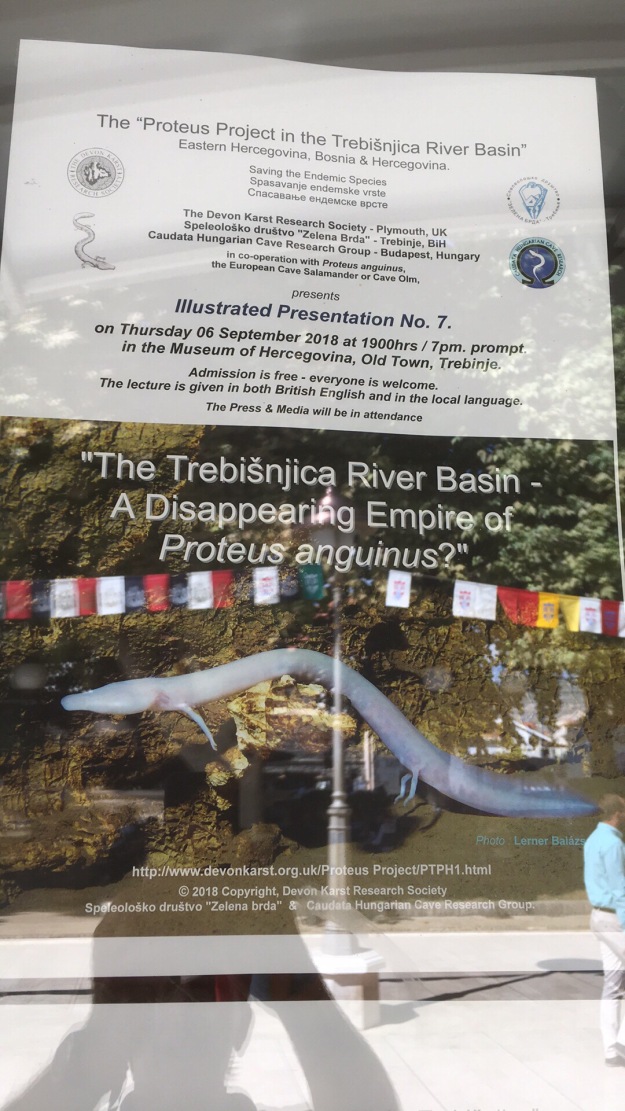It was while I was visiting the very interesting Museum in the old town of Trebinje, trying yet again to grasp the history of Serbs in Eastern Hercegovina, that I received my first introduction to the cave olm, or proteus anguinus. Sometimes also known as the cave salamander, this extraordinary creature is supremely and specifically adapted to the environment in the caves in the Dinaric Alps.
It was my luck to be in town, and to be able to attend a presentation about the Proteus Project.

Poster in the window; Trebinje Museum.
…..and this video ( with a great soundtrack ) really shows this amazing creature in its habitat. The Devon Karst Research Society was jointly responsible for organising the evening.
A committed group of volunteers, some of which were present at the Museum that evening, have done so much work to try and educate local people about the olm’s vulnerability and also the interconnectedness of its habitat and theirs. It has been hard work.
Why I titled this little section as I did, is because of what I see as the vital role of the olm, as an indicator of how well or badly we care for our environment.
To begin with, the range of temperature of the water that is required is very narrow – generally between 8 and 14 degrees Celsius. The alkalinity level is vital too, and these qualities of water – clarity, alkalinity, temperature and level of oxygenation – are specific features of the karst of this part of Europe, and hence the vital ingredients for the survival of the olm.
However, all kinds of pollution are increasingly challenging the quality of the water in these subterranean habitats. Agricultural runoff; be it pesticides and fertilisers, heavy metals, leachates from industrial processes, and from legal and illegal waste-tipping, are all extremely toxic to the cave olm.
The project volunteers have been working hard not only to educate local people about the value of maintaining the cleanliness of their environment for the value it gives to them, but also how safeguarding this rare, and iconic creature, can bring with it a sense of pride in the astonishingly beautiful landscape they share with it.